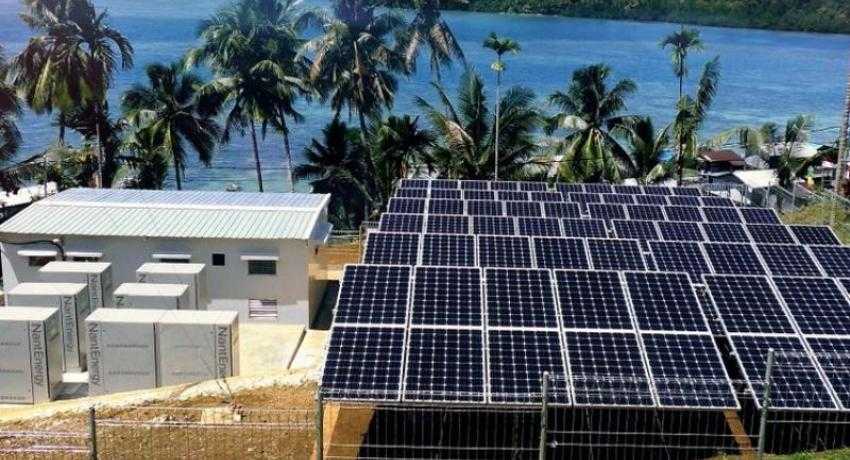Five Predictions for the Solar Industry in 2011
So this is it, the start of a new year is upon is. Solar gained major traction in the U.S. and across the globe in 2010. But what’s in store for the solar industry in 2011? It’s likely going to be another crazy ride with wild growth. Here are some projections for 2011.
1. Solar will continue to grow in the U.S. by leaps and bounds in 2011 and beyond. According to GTM Research Managing Director Shayle Kann, 1.5 gigawatts of solar could be installed in the U.S. in 2010. “The U.S. PV market will grow more than global demand in 2012 and beyond,” he said. That’s partly because incentives in other countries, like Spain and Germany are drying up and partly because of incentives and requirements in the U.S., like renewable portfolio standards (RPSs).
One of the biggest factors that will impact the solar market in the U.S. was the passing an extension of the 1603 Treasury Grants in December 2010. The extension allows for investors in commercial solar projects to recoup their tax rebates upon completion of their projects.
2. It won’t just be California making solar headlines. The majority of states—29, according to the Database of State Incentives for Renewables and Efficiency—have enacted an RPS and 7 more have RPS goals in place. As utilities and power producers race to meet the requirements, large-scale photovoltaic projects are likely to start springing up all over the place.
California is likely to remain the overall leader in installed capacity, but other states are likely to become more significant players in the solar market. “Significant gains will be seen in Oregon, Texas, Ohio, Florida, Colorado, Washington, New Mexico, Tennessee, New York, Pennsylvania, Massachusetts and North Carolina,” said EuPD’s report “U.S. Solar Policy Impact Analysis.”
3. Major firms will enter the solar market in 2011. The entrance of these and other companies show that the industry is reaching new levels of maturity and the big boys want to get in before its too late.
For instance, General Electric is reentering the solar market in 2011. The company previously offered crystalline silicon photovoltaics but stopped selling them. Starting in 2011 it will offer players will make significant headway into the market with new two types of thin-film photovoltaics. “GE's CdTe panels are available in more limited quantity through 2011, whereas GE's CIGS panels will be more widely available,” said a General Electric spokesperson. Similarly, Boeing will introduce more efficient photovoltaic panels in 2011 that could displace SunPower as the world’s most efficient commercially available solar modules. And Dow Chemicals will introduce its Powerhouse Solar Shingles for commercial availability in 2011.
4. Fossil fuel prices will increase, making solar more attractive. Across the board, from oil, to coal and natural gas, the cost of digging up deteriorated dinosaur remains is going to get more expensive. Already gas industry analysts are projecting that gas will again cost more than $3.00 a gallon across the U.S. In fact, former Shell Oil CEO John Hofmeister said that gas prices will reach $5 per gallon. Coal prices will also increase, predicted Dennis Markatos-Soriano, director of the East Coast Greenway Alliance. He projected, “Supply increases take time so the tight global market will likely push spot market coal prices above $150/ton, potentially challenging mid-2008 levels above $175/ton.” He also projected that natural gas prices will increase in 2011. “I see natural gas rising from the bottom ~$4 per MMBtu [i.e. 1 million British themal units] lately but staying mostly restrained below $7 (still significantly below the summer 2008 high ~$10).”
5. Solar prices will drop both in terms of module costs and installation costs, making solar even more attractive. Module costs for solar panels have been dropping almost every year. “From 1998-2009, capacity-weighted average installed costs declined by about 3.2 percent (or 30 cents per watt) per year, on average, starting from $10.80 per watt in 1998,” according to the Lawrence Berkeley National Laboratory’s recent report, Tracking the Sun III. However, things stagnated in 2009. The cost of solar modules dropped in 2009, but the cost of installed solar lagged.
Preliminary results showed that the costs have dropped significantly in 2010 and that trend is likely to continue into 2011. RPSs are another factor that could help reduce the cost of solar significantly. And as more companies enter the solar market and the overall industry production capacity increases, the cost of solar is likely to decrease.




